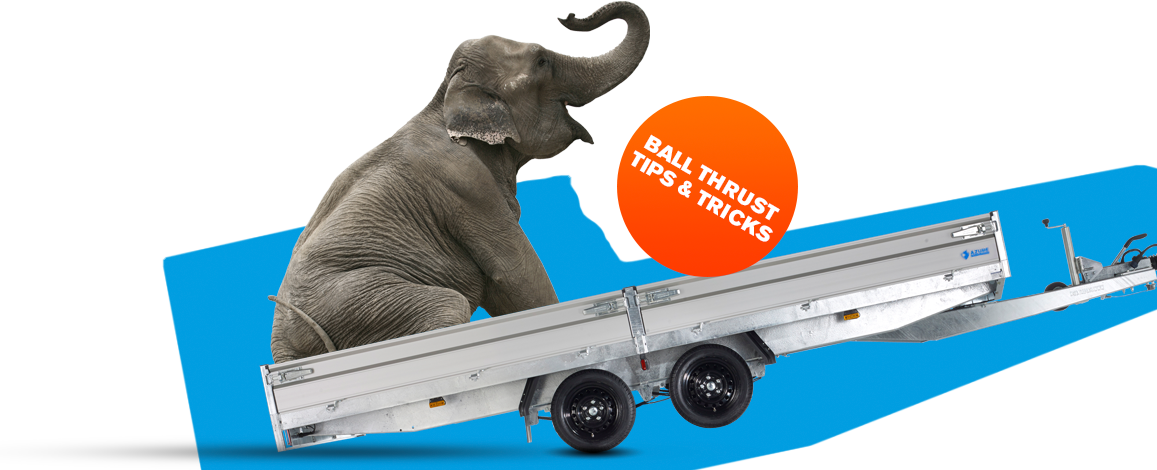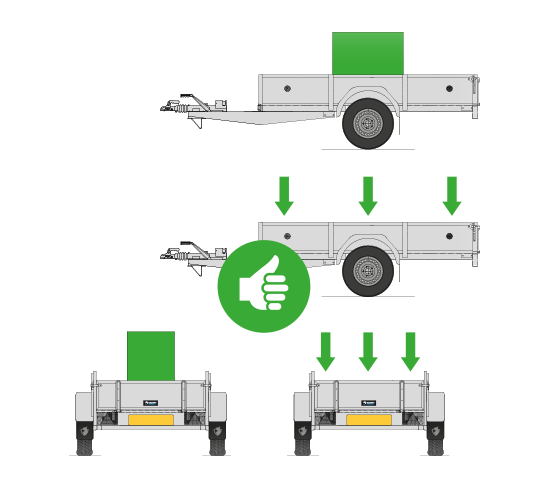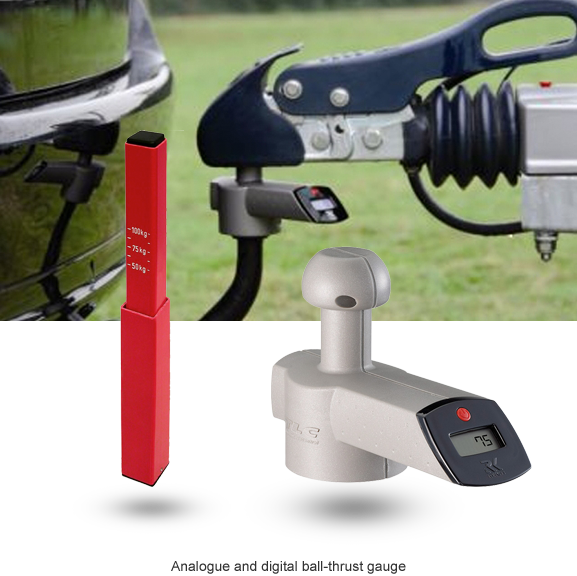TRAILER BALL-THRUST
YOUR TRAILER AND BALL THRUST
Ball thrust is the force that a trailer applies to the tow bar of a car via the coupling. The amount of pressure exerted on the tow bar will depend on how the trailer has been loaded. For example, a heavy weight positioned near the drawbar could result in excessive ball thrust, while positioning too much of the load at the back of the cargo bed will result in insufficient ball thrust. A negative pressure may be the case too, if an upward force is applied to the tow bar. All of these situations are the result of incorrect loading, resulting in an increased risk of skidding and swerving.
This makes ball thrust one of the most important criteria for the road-holding of trailers and the road-handling of the vehicles towing them. HAPART Aanhangwagens bears in mind the need for optimum ball thrust when developing trailers too - when considering the distance between the axles and the centre of the wheels, for example.
VISIT A DEALER NEAR YOU
CALCULATING THE BEST BALL THRUST
The ideal ball thrust is close to the maximum allowable pressure. Please note: a trailer's ball thrust may not exceed the maximum value permitted for the car and/or the tow bar being used (see the specifications for the tow bar or vehicle in question). You will find the maximum load for your HAPERT trailer on the type plate for your particular model.
YOUR MAXIMUM TRAILER LOAD
Before you measure ball thrust, it will be important to know the maximum load your trailer is able to transport. The type plate for each HAPERT trailer always includes the relevant gross loading capacity, which is the maximum combined weight of the trailer and the load it is carrying. So, you will need to deduct the weight of the trailer from the gross loading capacity to work out the weight your particular HAPERT model is able to carry.
AN EXAMPLE:
The HAPERT Azure H-2 405 x 220-cm model has a maximum loading capacity of 2700 kilograms. The trailer itself weighs 650 kilograms. This Azure model is able to transport a load of up to 2050 kilograms.
FIND YOUR LOADING CAPACITY HERE
MAKE SURE THAT THE CORRECT PRESSURE IS APPLIED TO THE TOW BAR
To make sure that your brakes work properly and road handling is good, the centre of gravity must be as close as possible to the axle. You are probably now wondering how to position a load on your trailer to avoid insufficient or excessive ball thrust. The causes and of consequences of and solutions to both situations follow below.
- THE BALL THRUST IS TOO LOW
- The load is positioned too far to the rear of the trailer
- The total combination is less stable
- It becomes far too easy for the trailer to swerve
- THE SOLUTION: move the load from the back of the trailer towards the front.
- THE BALL THRUST IS TOO HIGH
- The load is positioned too close to the front of the trailer
- The car suspension and tow bar have been overloaded
- The trailer coupling has been overloaded
- THE SOLUTION: move the load closer to the axle of the trailer, particularly the load positioned at the front of the trailer.
EXTRA TIPS FOR OPTIMUM ROAD HANDLING
A number of other tips on how to achieve correct ball thrust follow below:
- Place heavy objects above the trailer axle as much as possible.
- Distribute lighter objects evenly across the cargo bed.
- Make sure that the left and right-hand halves of the trailer have been loaded with an equal weight.
- Avoid point loads.
- Make sure that the load is secured properly.
- If so, make sure that you familiarise yourself with the regulations applicable in the country in question.
- Always couple the trailer to the towing vehicle before you start to load or unload.


MEASURING BALL THRUST
In addition to the tips we have already given you, we advise that you always measure ball thrust too. You could do this with a special ball-thrust gauge or an ordinary set of scales. The procedure is as follows:
- Place a plank on the scale, making it possible to distribute the force over a bigger surface;
- Next, place a piece of wood between the trailer coupling and the plank on the scale;
- Allow the trailer rest on the scale and then measure the thrust.
EXTRA ADVICE FROM HAPERT:
We advise that you always weigh loads that you have not transported before. If possible, enquire about the exact weight of the load before you actually transport it in your trailer.
GET PERSONAL ADVICE
For good road handling, it is essential for the coupling height of the car to correspond with the coupling height of the trailer. When buying a trailer, ask your HAPER dealer for advice about the coupling height. This is important, as there are many ways in which this can be adjusted!
VISIT A DEALER NEAR YOUPersonal advice from a dealer near you:

